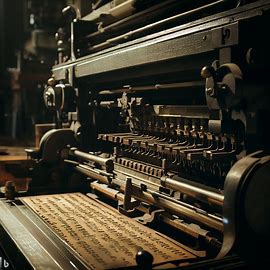When it comes to digital font formats, two of the most common and widely used are OpenType (OTF) and TrueType (TTF). While both formats have their advantages and are compatible with various platforms and software, they do have some key differences. In this article, we’ll explore the differences between OTF and TTF fonts to help you make an informed decision when choosing the right font format for your projects.

OpenType (OTF)
OpenType (OTF) is a digital font format developed by Adobe and Microsoft in the late 1990s. It was designed as a successor to the TrueType format and aimed to overcome some of its limitations. OTF fonts can contain a vast range of characters and language support, including ligatures, alternate glyphs, and stylistic sets. This flexibility makes them particularly suitable for typography enthusiasts, graphic designers, and professionals who require advanced typographic features.
One of the major advantages of OTF fonts is their cross-platform compatibility. They work seamlessly on both Mac and PC systems, making them highly versatile and widely accessible. OTF fonts also have enhanced typographic control and layout features, such as advanced kerning, glyph positioning, and support for complex scripts like Arabic or Indic languages.
TrueType (TTF)
TrueType (TTF) fonts, on the other hand, were developed by Apple and Microsoft in the 1980s. They were the dominant font format for many years and are still widely used today. TTF fonts are known for their simplicity and widespread compatibility across different operating systems and applications. They are relatively straightforward to create and install, making them accessible to both designers and everyday computer users.
TTF fonts are characterized by their efficient file size, which allows for faster loading times and lower memory usage. They are suitable for a wide range of applications, including print and digital media, web design, and document creation. However, TTF fonts generally offer fewer advanced typographic features compared to OTF fonts.
Differences between OTF and TTF
One of the main differences between OTF and TTF fonts lies in their typographic capabilities. OTF fonts tend to offer more advanced features, such as ligatures, swashes, small caps, and extensive language support. They often have better hinting and rendering, which can result in improved on-screen readability. TTF fonts, while lacking some of these advanced features, excel in terms of simplicity and compatibility.
Another notable difference is the compression method used by each format. OTF fonts typically use a compact, PostScript-based format, while TTF fonts utilize a quadratic Bézier curve format. This distinction affects the overall file size, with TTF fonts generally being smaller in size.
Choosing the Right Font Format
When it comes to choosing between OTF and TTF, the decision depends on your specific needs and requirements. If you prioritize advanced typographic features, extensive language support, and layout control, OTF fonts are an excellent choice. They are particularly suitable for professional designers and those working with complex typographic projects.
On the other hand, if compatibility, simplicity, and efficient file size are your main concerns, TTF fonts offer a more straightforward solution. They are widely supported across platforms and can be easily integrated into various design applications.
In conclusion, both OTF and TTF fonts have their strengths and areas of application. Understanding the differences between the two formats will help you make an informed decision based on the specific requirements of your project. Whether you opt for the advanced capabilities of OTF or the simplicity and compatibility of TTF, both formats offer a wide range of fonts to suit your design needs.
